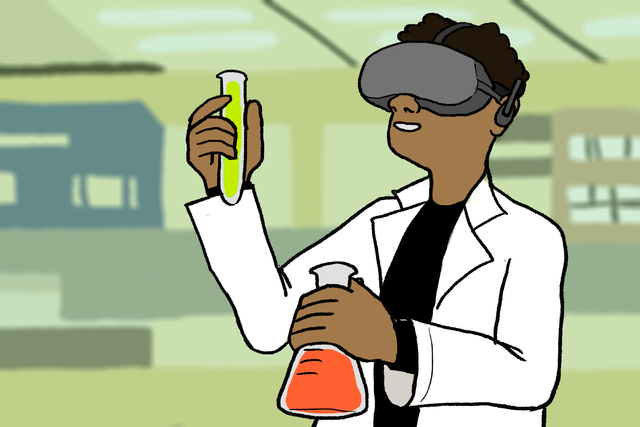With the pandemic keeping most students out of the lab, University of Toronto professor Ariel Chan is bringing in-person learning to her classroom with the help of virtual reality.
Using Labster, a virtual lab platform, to run her labs with 3D simulations, Chan is giving her third-year chemical engineering and applied chemistry students a digital, hands-on experience while they are required to stay home.
With the virtual reality program, students still experience being in a U of T lab from a first-person perspective, right down to putting on a lab coat and gloves.
“It’s very difficult just virtually viewing someone doing the work,” Chan said, “so we are looking into how we can help students to have more of a physical sense and apply what they have learned.”
With the help of avatars, students are able to have immersive interactions with their chemical engineering laboratory in Labster, Chan said. Students can access assignments via their digital campus, import virtual laboratories to their system, and conduct simulations online.
Judy Xia, a chemical engineering and applied chemistry student in one of Chan’s classes, said the professor’s use of virtual reality has improved her isolated learning experience.
“There’s a lot of chances for me to sort of keep revisiting and sort of keep refreshing my memory,” Xia said of the virtual reality platform. She said she thinks that this method of learning could be useful in a normal year as well.
Chan also assigned activities for students to conduct in the comfort of their own homes, including a heat transfer simulation with their stovetop and a drainage experiment with their sink or toilet.
Chan said she hopes the at-home experiments and virtual reality will help students apply the simulations they conduct independently to real-world scenarios they can investigate in the virtual lab.
“Engineering is around us. That started helping me to think about how I could help my students,” Chan said.
Mackenzie Gole, another student taking Chan’s chemical engineering and applied chemistry classes said the use of virtual reality and at-home experiments should continue to supplement students’ learning after the pandemic.
“I truly believe that professor Chan has done everything to the best of her ability to make it an engaging and educated experience,” Gole said in an email to the Charlatan. “I feel the course would have fallen apart without the effort that she put in.”
Assistant professor Jennifer Farmer, who teaches U of T’s second-year chemical engineering and applied chemistry lab, praised Chan’s efforts to keep students engaged and provide hands-on experience through virtual reality.
“It’s definitely had a real positive impact on her students to still be able to experience our state-of-the-art lab, even if it is from the comfort of their home,” Farmer said.
In her second-year lab, Farmer has also implemented at-home experiments for tasks such as identifying mineral content in water using soap, measuring dye in Gatorade, and analyzing acids and bases found in household products.
Chan said these experiments and the virtual reality simulations are a safe way to provide the learning they would have received had they been in a physical lab.
Xia said last semester’s modules on the virtual reality platform made her more conscious of her lab ethic by testing her understanding with learning check-ups and kicking her from the lab when she forgot to perform key procedural steps.
“It’s quite different to what’s going to happen in the actual lab but … I feel like this is actually the best alternative we can ever have,” Xia said.
Looking ahead, Chan said she hopes to continue using virtual reality, and discover other ways to prepare students for when they enter the real lab again.
Featured graphic by Etta Gerrits.






